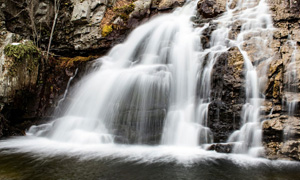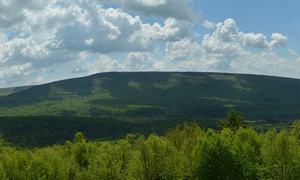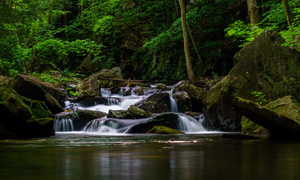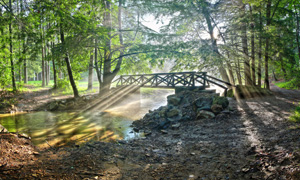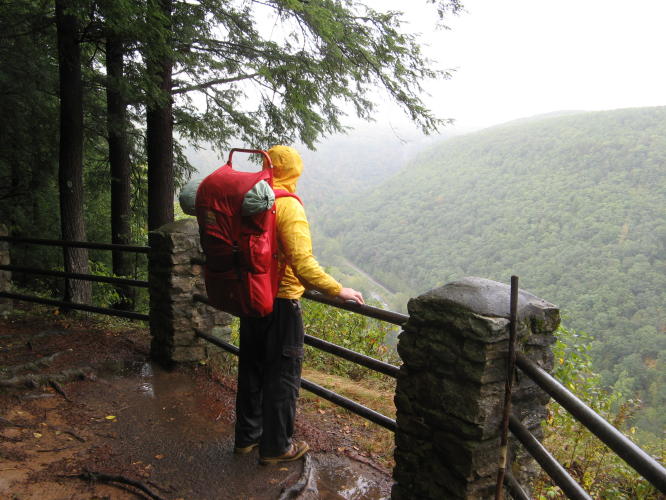
Located deep within the Tioga State Forest in Tioga and northern Lycoming counties, Pennsylvania, lies the 30.5 mile-long West Rim Trail. This trail stretches the western edge of Pine Creek Gorge, also known as the “Grand Canyon of Pennsylvania”. The West Rim Trail is a testament to the natural resilience and human stewardship of Pennsylvania’s forests and wildlife. Not only will this article trace the history of the trail through time, but it will also highlight the beauty of the trail today and how visitors and recreationalists to the trail can keep it maintained.
The history of this trail does not just begin with the blazing of it by the Youth Conservation Corps in the late 1900s; its trail’s history begins with the area we now know as Pine Creek Gorge. This area was once covered with sizable glaciers that eventually resulted in the gorge as we now know it today due to water action and erosion. After the melting of these glaciers, the land was immersed with wildlife until the 1800s.
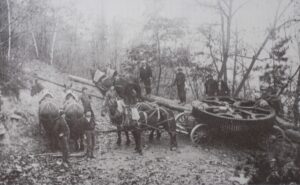
Tioga History – Photo credit: unknown / Bureau of Forestry
During the 1800s, the logging industry was booming and much of the land was stripped of the white pine trees that inhabited it. These trees were cut and sent down the Susquehanna River via free float or rafts until they arrived at lumber mills located in towns along the river. After the land was stripped of white pine, hemlock trees started popping up in the forest; these trees were not safe either. With the implementation of railroads and train cars, the lumber industry took over Pennsylvania very quickly.
By 1910, the forests of Pine Creek were completely stripped and bare of any trees, causing brush and wildfires to take over. Some of these fires were beneficial to the land for regeneration, however, many of them had harmful impacts on the area. When the fires finally calmed, aspen and white birch trees emerged and began the process of natural regeneration in the forest. By the end of the 1900s, Pennsylvania purchased land on the West Rim of Pine Creek Gorge which would eventually be used for Colten Point State Park and the West Rim Trail.
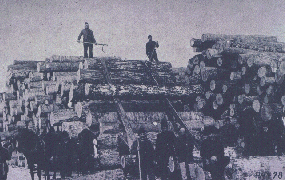
1800s Logging Pile / Photo Credit unknown
The idea of creating the West Rim Trail was originally introduced by the Tioga State Forest. This project was passed onto the Youth Conservation Corps (YCC) to complete in the late 1900s. Slowly making their way through the forest, the YCC was able to blaze a section of the trail from Rattlesnake Rock parking lot to Refuge Trail in 1980. Between 1982-1983, the YCC was on the move again, extending the trail from the Refuge Trail to its current terminus located in Ansonia.
Despite being around for over twenty-five years, the West Rim Trail has only been re-routed twice. In 1993, a section of the trail, east of the Big Dam Hollow area, just south of Fahneystock Road, was rerouted to avoid a beaver dam and wetland complex. This section of the trail was rerouted from the woods to West Rim Road to avoid the high waters that resulted from the dam and the wetland. Secondly, a very small section of the West Rim Trail was re-routed in July of 2006. At the northern end of the trail, the first 0.2 miles were re-routed to the road in hopes of preserving a group of nesting bald eagles.
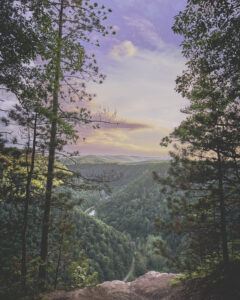
Photo by Justin Lambdin, Tioga State Forest
Former and current trail maintenance of the West Rim Trail is done by the Tioga State Forest and the Keystone Trails Association (KTA). The trail is maintained primarily by volunteers working for KTA and under the district foresters at Tioga State Forest. Most recently, in May 2023, KTA hosted a trail care event to help maintain the West Rim Trail. Volunteers worked on clearing fallen trees, blazing and brush cutting mountain laurel, and working on overall improvements to make the trail more accessible to visitors. With the continuous dedication of volunteers and members of the community, the West Rim Trail has been kept in fairly good condition so that hikers and backpackers can continue to enjoy the wildlife and vistas that it has to offer.

Photo by Joe Barnett, Tioga State Forest
Hiking the West Rim Trail today can be a truly breathtaking experience for any hiker or backpacker willing to take on the journey. Typically, those looking to hike the whole trail will make it a 2-3 day endeavor, hiking anywhere between 10-15 miles a day. With a dozen stunning vistas, plenty of water sources, and multiple spots for overnight camping, the West Rim Trail makes for the perfect smaller-scale thru-hike. Many experienced hikers and backpackers say that the best time to hike the West Rim Trail is from April to October with the early fall colors beginning to touch the trees, creating a stunning backdrop along the trail. Lining the trail is over 25 campsites, 9 dependable water sources, and over 20 vistas, making the West Rim Trail one of the most impressive trails in Pennsylvania.
The West Rim Trail is more than just a scenic hiking path through Pennsylvania’s Tioga State Forest, it is a living record of the important history that encompasses the area. From the devastation of the lumber era to its rebirth as a haven for hikers and conservation enthusiasts, the West Rim Trail has been through it all. This trail is a beautiful embodiment of the complex relationship between people and nature that can take place. It is the continuous responsibility of all those who visit the trail to keep honoring its past while inspiring a deeper connection to its future.
 Written by: Emily Wenger, PPFF Summer Intern
Written by: Emily Wenger, PPFF Summer Intern
Emily is currently pursuing a Bachelor of Science in Environmental Science at Bethany College, where she also serves as captain of the college lacrosse team. Passionate about the outdoors, Emily enjoys hiking, tubing, gardening, and playing sports. She brings a strong sense of community and dedication to conservation, inspired by her love for Pennsylvania’s state parks and forests.

